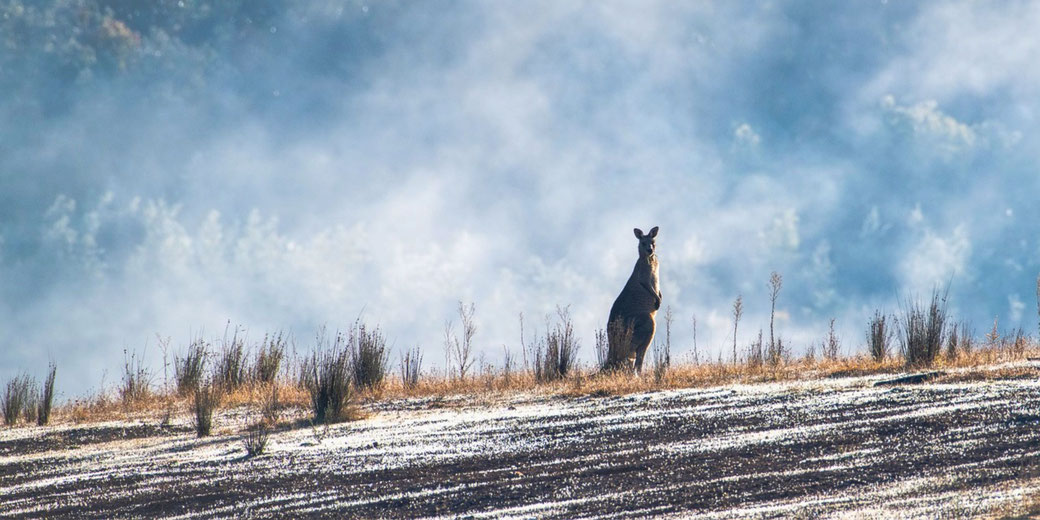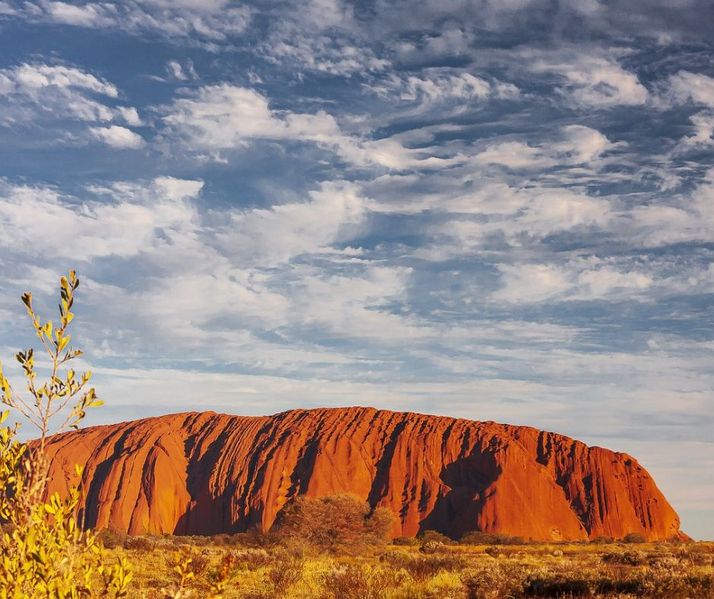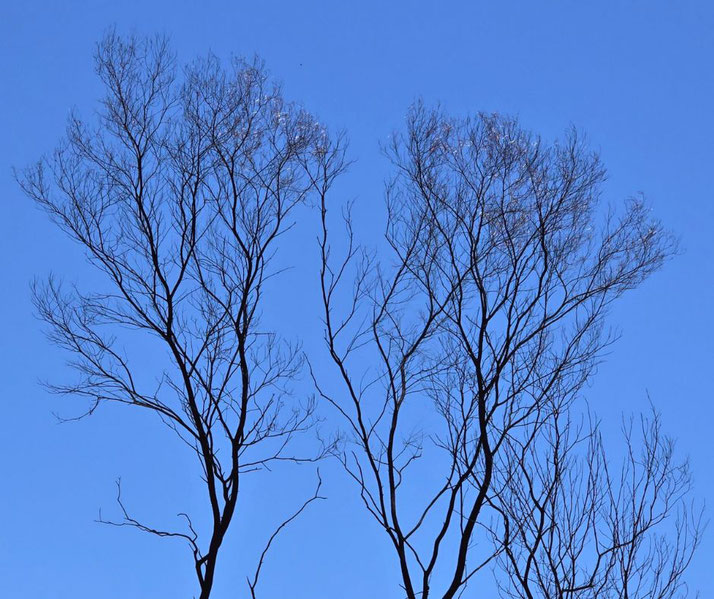What is ‘Deep Time’ history of the First Nations People of Australia?

When we think of history, we often think of events that happened in the last few centuries or millennia. But the history of the continent is actually much longer than that.
In fact, the concept of 'big history' covers the the story of life on Earth, which goes back billions of years. As part of this, we talk about something called ‘Deep Time’.
Deep Time is the idea that the Earth and all its living things have a long and detailed history that covers hundreds tens of thousands of years, including massive geological ages and evolutionary changes.
It is an important way of understanding the natural world and where we fit within it.
Deep Time in Australian First Nations' history
In the study of geology, Deep Time refers to the huge time scale of Earth. It includes both the formation of the Earth around 4.5 billion years ago and the later appearance of life about 3.5 billion years ago.
However, in the case of First Nations Australian history, Deep Time refers to the long and ongoing history of Indigenous Australians, stretching over tens of thousands of years.
This includes cultural traditions, creative technologies, and belief systems that have developed over this huge time span.
The concept of Deep Time raises questions about traditional Western ideas of history by highlighting that a timeline that doesn't depend on written records but can be based on the strong link between Australia's First Nations peoples and the land.
To begin to understand why this matters, it is important to remember that the First Nations Peoples have lived in Australia for more than 60,000 years.
That makes them one of the world's oldest continuous cultures.
For example, the remains of Mungo Man and Mungo Lady, found at Lake Mungo in New South Wales, are some of the oldest human remains that are found in Australia.
These remains date back to about 40,000 to 42,000 years ago.
As a result, instead of a history that focuses on famous individuals and events, Deep Time looks at the ongoing relationship with the land, sky, and waterways.
This concept understands that the land itself carries stories and proof of the past, and it includes the stories of major environmental changes, like the forming of river systems and the Great Barrier Reef.
Indigenous peoples experienced these changes and adjusted to them over thousands of years.
For example, Uluru, the site also called Ayers Rock, was a sacred place for the Anangu people for over 10,000 years.
It was an important part of their Dreaming stories because it represented their spiritual connection to the environment.
Likewise, the Wurdi Youang stone arrangement in Victoria is thought by some researchers to be about 11,000 years old.
That would make it one of the oldest known astronomy sites in the world since it would show First Nations people's advanced understanding of the night's sky.
Therefore, the stories, customs, and knowledge of these people were considered to be valuable and were shared across many generations.
The act of sharing this information helped experienced 20th-century anthropologist Norman Tindale, who mapped Aboriginal tribes across Australia, to find the land boundaries and languages of different Indigenous groups.

How indigenous peoples remember time
Before European settlement in 1788, it is thought that the First Nations population across Australia was between 750,000 and 1 million people, with over 250 separate language groups.
However, it is important to know that the history of Australia's First Nations peoples is not written in books or documents.
Instead, it is said to be written in the land, in the stories, in the items, in the ceremonies, and in the memories of the surviving people.
As a resul, it is a living history that is passed down from one generation to the next.
Here are some specific ways that First Nations people remember Deep Time:
Dreamtime stories
Central to Indigenous Australian worldviews are the Dreamtime stories. They describe how the universe, the land, and its features began, and how people, animals, and the environment are connected.
Each Aboriginal group has its own Dreamtime stories, and these are closely linked to their local areas and cultural traditions.
Such stories often include good and bad characters, and these tales show what happens because of people’s choices, which helps teach values like respect, sharing, and community duties.
For instance, the Ngarrindjeri story of Thukeri is a lesson about being greedy, where two fishermen suffer consequences for not sharing their catch with others.
Telling these stories helps younger generations learn social rules, beliefs, and spiritual ideas, which supports cultural continuity.
Land management
The strong bond with the land can be seen in the advanced land care methods of Indigenous Australians.
Controlled burns, often called 'fire-stick farming' or 'cultural burning', were important for looking after the land and ecosystems in a balanced way for thousands of years.
People used this to take care of the environment, encourage different plant and animal life, and stop major bushfires.
Use of this traditional method continues today in some areas.
In the same way, managing water sources and using hunting and gathering methods that don’t harm nature have helped care for the land in tune with its natural patterns.
The symbolic meaning of this idea appears clearly in the story of the Rainbow Serpent.
This is because the Rainbow Serpent represents creation and the power of water to give life, linking spiritual meaning to environmental features.
Art and expression
Ancient rock art found across Australia also shows the long history of First Nations peoples.
Some rock art, like those in Arnhem Land in the Northern Territory, are believed to be about 20,000 years old.
They show animals and sea life that no longer exist, which offer clues about life and nature long ago.
The Kimberley region in Western Australia has some of the most famous rock art, including the Gwion Gwion paintings also known as Bradshaw paintings.
Such works are some of the oldest continuing art styles in the world.

Events remembered in Deep Time history
One of the most amazing things about Australian First Nations oral traditions is that they have remembered important events and changes in nature for thousands of years.
For example, stories from the Tasmanian Palawa people tell about when the Bassian Land Bridge connecting Tasmania and mainland Australia was flooded.
This likely happened about 10,000 years ago when sea levels rose after the last Ice Age.
That means that this is one of the oldest oral traditions in the world and shows how long-lasting and accurate Indigenous storytelling can be.
The Tasmanian Palawa people also have stories about the star Canopus, which would have been near the South Celestial Pole when the land bridge was underwater.
Their memory of this sky event shows they understood the stars and how their positions changed over time.
In fact, about 21 places in Australia have stories that explain how the coastlines changed as the ocean rose and covered areas that people could once walk on.
Stories like these have lasted more than 7,000 years, showing the strength of oral traditions.
Deep Time: A bridge to understanding
For many Australians who are not Indigenous, it can be hard to understand how long and detailed First Nations history is.
Because of this, the idea of Deep Time can help people understand: by helping people appreciate how strong the connection is between Indigenous peoples and the land.
It is not only about knowing that Indigenous Australians have lived on the continent for a long time; it is also about understanding that their culture, learning, and traditions have developed.
This perspective is can lead to greater respect for Indigenous knowledge and what it offers modern Australia.
What do you need help with?
Download ready-to-use digital learning resources
Copyright © History Skills 2014-2025.
Contact via email
With the exception of links to external sites, some historical sources and extracts from specific publications, all content on this website is copyrighted by History Skills. This content may not be copied, republished or redistributed without written permission from the website creator. Please use the Contact page to obtain relevant permission.





